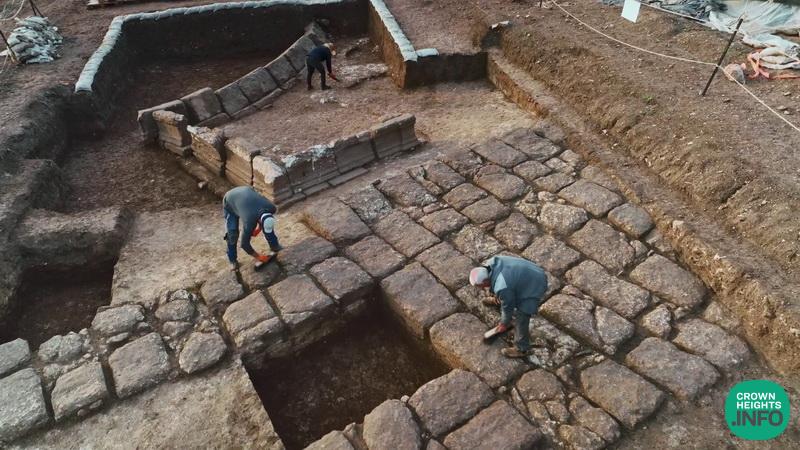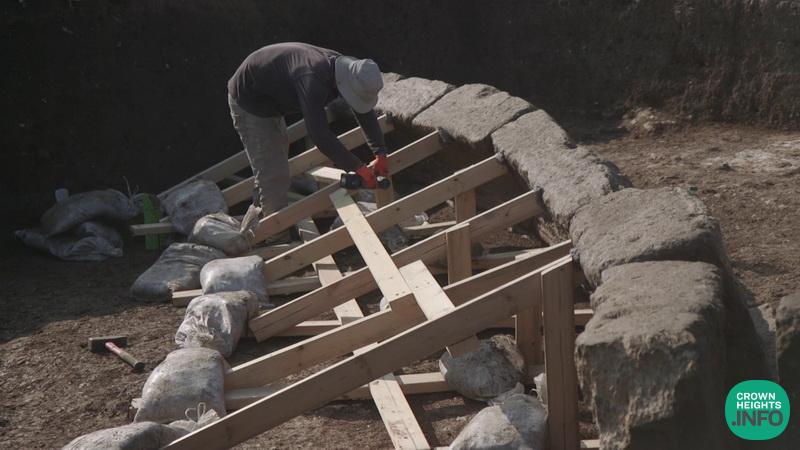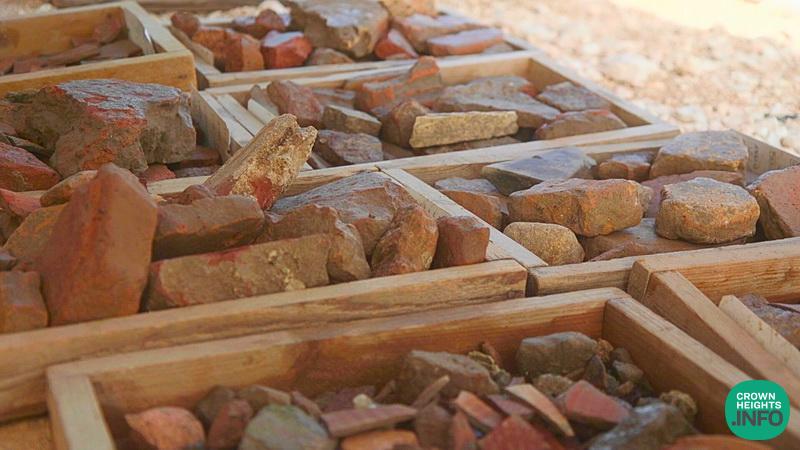
1,800-Year-Old ‘Iron Legion’ Roman Legionary Base Exposed at the Foot of Tel Megiddo
Architectural remains of the 1,800-year-old Roman VIth ‘Ferrata’ Iron Legion military base were uncovered in a recent excavation carried out by the Israel Antiquities Authority at the foot of Tel Megiddo, close to the ancient Kfar Othnay village (Greek: Capercotnai). The excavation was directed by Dr. Yotam Tepper and Barak Tzin and funded by the Netivei Israel National Infrastructure Company. In the course of the excavation, extensive and impressive architectural remains of the Via Pretoria (the main road of the camp) were uncovered, as well as a semicircular-shaped podium and stone-paved areas which were part of a large, monumental public building. The VIth Legion Roman legionary base is the only Roman military base of these dimensions that has been located and exposed in Israel.
“The Roman Legion camp at Legio was the permanent military base for over 5,000 Roman soldiers for more than 180 years, from 117–120 to about 300 CE,” says Dr. Yotam Tepper, excavation director on behalf of the Israel Antiquities Authority. “Two main roads intersected at the center of the 550 m long and 350 m wide camp, and its headquarters were erected here. It was from this base point that all the distances along the Roman Imperial roads to the main cities in the north of the country were measured and marked with milestones. The ancient building remains were not preserved to a height, as most of the building stones were removed over the years for reuse in building projects carried out during the Byzantine and Early Islamic periods.”
Dr. Tepper emphasized that the discovery of the legionary base was not accidental, as over the last decade, surveys and six seasons of archaeological excavations have been carried out within a joint academic geographical-historical research project directed by Dr Tepper and Dr. Matthew J. Adams, as part of the Jezreel Valley Research Project (JVRP), carried out on behalf of the Albright Institute of Archaeology in Jerusalem.
Preliminary surveys of the camp area indicated that the entire Roman base and all its components underlie the wheat fields of Kibbutz Megiddo. “The unique contribution of the results of this research project lies in the rarity of such archaeological discoveries,” says Tepper. Whilst Roman military camps are known in Israel, they are temporary siege camps, or small camps belonging to auxiliary divisions. None compares with the entire complex of the legionary base, as has been uncovered in the archaeological excavations at Legio, next to the Megiddo Junction.”
Historical sources and some partial information point to the existence of a permanent Roman legionary base of the Xth Fratensis Legion in Jerusalem, but the camp remains to be discovered.”
In the excavation, coins, parts of weapons, pottery sherds, and glass fragments were uncovered, but the most predominant finds are the roof tiles that have been found in extremely large quantities. “The roof tiles, some of which were stamped with the VIth Legion stamps, were used for various purposes, for roofing buildings, paving floors, and coating walls. The technology and know-how, the building techniques, and the weapons that the Legion brought with it from the home country are unique to the Roman army, reflecting specific Roman Imperial military footprints.”
According to Eli Escusido, Director of the Israel Antiquities Authority, “The proximity of the Roman legionary base to the National Park of Megiddo, recognized as a World Heritage Site, and also to one of the earliest Christian prayer halls known in the world, discovered by the Israel Antiquities Authority within the Megiddo Prison compound, provide the potential to enhance the tourist experience at this central location at the gateway into the Galilee.


















